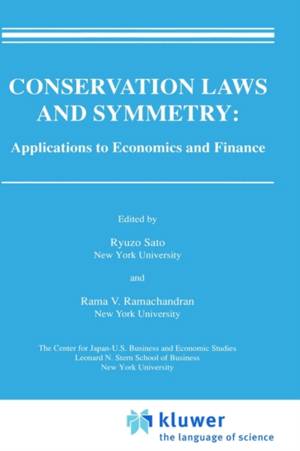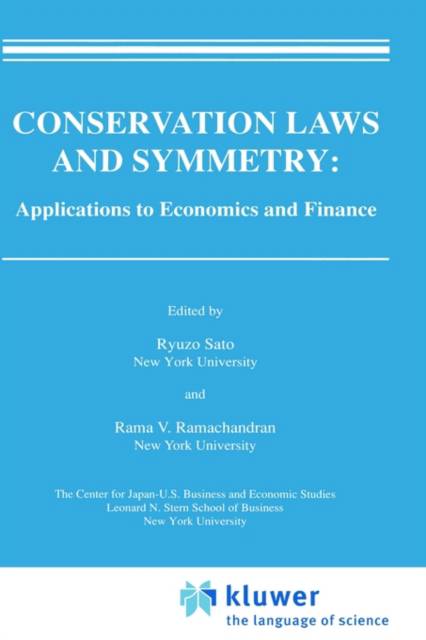
- Afhalen na 1 uur in een winkel met voorraad
- Gratis thuislevering in België vanaf € 30
- Ruim aanbod met 7 miljoen producten
- Afhalen na 1 uur in een winkel met voorraad
- Gratis thuislevering in België vanaf € 30
- Ruim aanbod met 7 miljoen producten
Conservation Laws and Symmetry: Applications to Economics and Finance
€ 223,95
+ 447 punten
Omschrijving
Modem geometric methods combine the intuitiveness of spatial visualization with the rigor of analytical derivation. Classical analysis is shown to provide a foundation for the study of geometry while geometrical ideas lead to analytical concepts of intrinsic beauty. Arching over many subdisciplines of mathematics and branching out in applications to every quantitative science, these methods are, notes the Russian mathematician A.T. Fomenko, in tune with the Renais- sance traditions. Economists and finance theorists are already familiar with some aspects of this synthetic tradition. Bifurcation and catastrophe theo- ries have been used to analyze the instability of economic models. Differential topology provided useful techniques for deriving results in general equilibrium analysis. But they are less aware of the central role that Felix Klein and Sophus Lie gave to group theory in the study of geometrical systems. Lie went on to show that the special methods used in solving differential equations can be classified through the study of the invariance of these equations under a continuous group of transformations. Mathematicians and physicists later recognized the relation between Lie's work on differential equations and symme- try and, combining the visions of Hamilton, Lie, Klein and Noether, embarked on a research program whose vitality is attested by the innumerable books and articles written by them as well as by biolo- gists, chemists and philosophers.
Specificaties
Betrokkenen
- Uitgeverij:
Inhoud
- Aantal bladzijden:
- 304
- Taal:
- Engels
- Reeks:
Eigenschappen
- Productcode (EAN):
- 9780792390725
- Verschijningsdatum:
- 31/05/1990
- Uitvoering:
- Hardcover
- Formaat:
- Genaaid
- Afmetingen:
- 166 mm x 243 mm
- Gewicht:
- 648 g

Alleen bij Standaard Boekhandel
+ 447 punten op je klantenkaart van Standaard Boekhandel
Beoordelingen
We publiceren alleen reviews die voldoen aan de voorwaarden voor reviews. Bekijk onze voorwaarden voor reviews.









